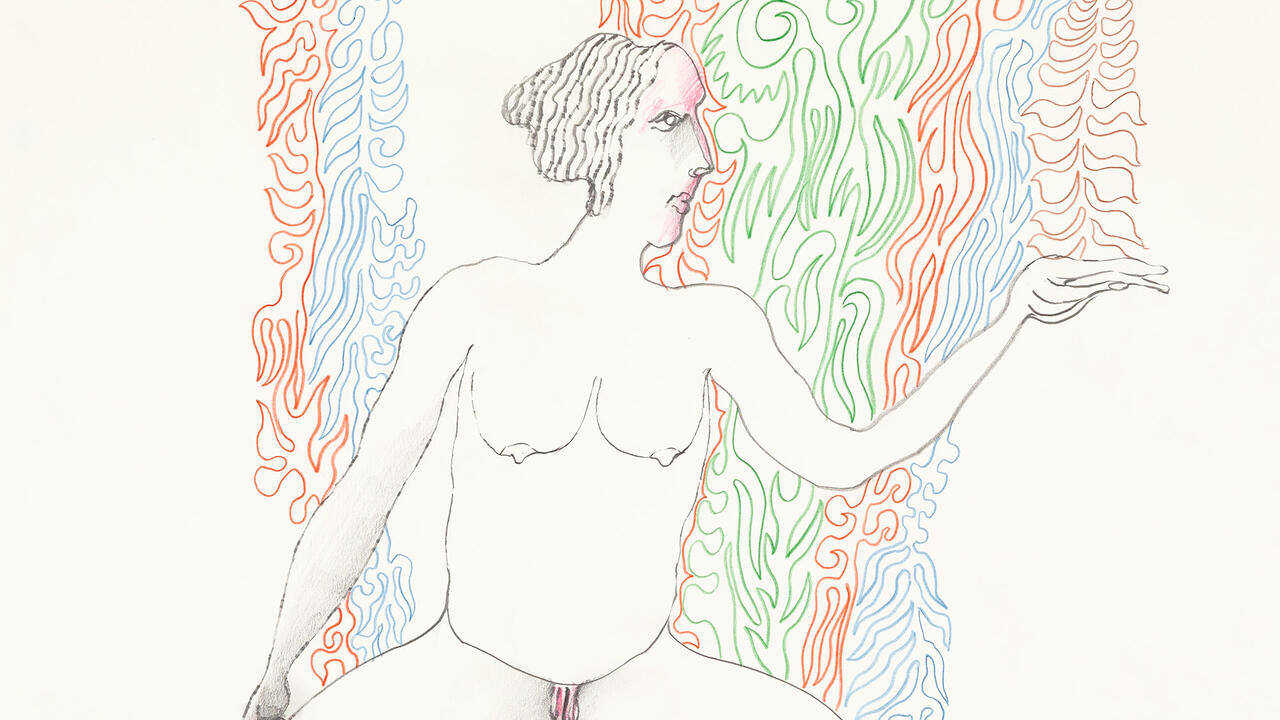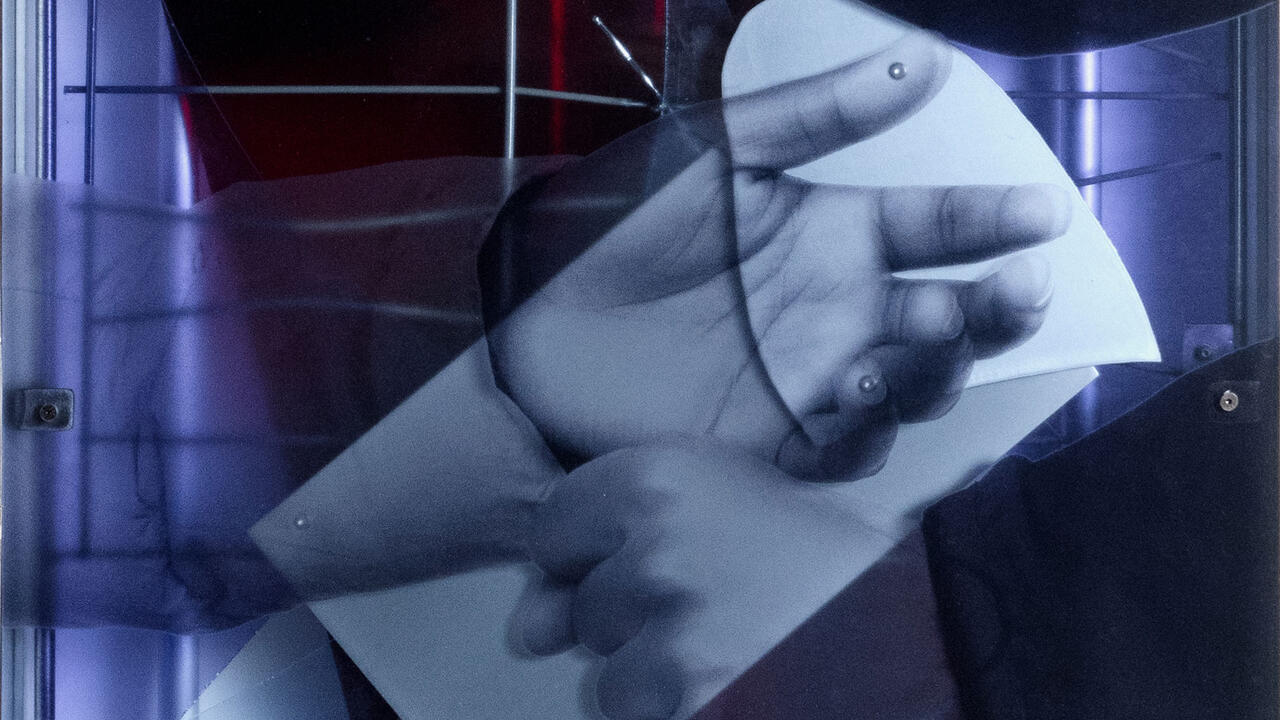Fiona Tan’s Mountains and Molehills
An exhibition of the artist’s films at Eye Filmmuseum, Amsterdam, examines the relationship between landscapes, archives and memories
An exhibition of the artist’s films at Eye Filmmuseum, Amsterdam, examines the relationship between landscapes, archives and memories

Fiona Tan’s ‘Mountains and Molehills’ opens in a grotto-dark corridor with Downside Up (2002), a short, black and white loop of flat, distended, anthropic shadows drifting across paving at three-quarters speed, trailing pedestrians and cyclists like effigiated balloons. Across the way, Vertical Red, Vertical White and Vertical Wide (all 2018) form a night-time, ‘moving picture’ triptych of bumper-to-bumper traffic snailing along 12 lanes of Interstate 405 in Los Angeles, the contra-motional cascades of headlamps and taillights intimating arteries and veins.

Where the space opens, the show contracts. Comprising six projections corresponding to the six cameras used for its production, Inventory (2012) presents a close-up look at Sir John Soane’s Museum, London. The neoclassical architect’s collection appears in Tan’s dusky, lingering videos like a crowded battery of antiquity’s sculptural merchandise, its narrow colonnades and contorted stairways sagging under all manner of time-bleached casts, carvings and ceramics. The alcoves’ hoarderly quality is all the starker for the absence of any labels of provenance or authorship among the rows of death masks, broken-off limbs and recumbent children.
Three further works take up imagined geographies. In the audio piece Brendan’s Isle (2010), Tan recounts the fact-and-fable voyage of St. Brendan, a sixth-century Irish monk who sailed at an angel’s behest to find a heaven-on-earth spared from hunger, thirst and time. In Island (2008), meanwhile, backdropped by greyscale longshots of southeast Gotland’s lonely junipers, a voice-over monologues the midsummer arrival of an unnamed, unseen ‘she’ in another promised land where ‘there is great luxury, time to think’ – only for her to slide into despair as the place’s timelessness and her mind’s isolation become a prison where ‘she can walk and walk, but she cannot escape’.

The three-channel video Gray Glass (2020) non-sequentially follows a 19th-century Alpine traveller across knee-deep snowdrifts, zigzag granite ridges and a glacial cave floor near Salzburg. He carries an oblong, scalloped mirror on his back, nodding to an entry in Johann Wolfgang von Goethe’s Italienische Reise (Italian Journey, 1816–17) about the on-foot transport of silvered crystal from Italy to Germany during the renaissance. Here, the mirror also carries a double meaning, with ‘gray glass’ a reference to the tinted-mirror compacts used by romantic painters to flatten and desaturate mountain terrains. As he climbs at the mercy of his employer and his surrounds, the traveller himself renders the sublime and – with the mirror as a forerunner of Tan’s camera – transforms land into landscape.
These themes converge within the red-painted wooden cinema at the exhibition’s centre. Behind the archetypal Zaan-house façade, Tan’s third feature film, Footsteps (2022), layers footage culled from the museum’s archive of silent documentary film produced in the Netherlands between 1890 and 1930 with a reading of letters she received from her father just after moving to Amsterdam in 1988. Half a world and half a century apart, image and sound slowly sine and cosine to produce uncanny poetry: the footage, trafficking in commerce (a windmill planes wood for coopering) and village festivities (women ice-skate arm in arm), is public and provincial, while the voice-over conveys Tan’s father’s views on matters both historically particular (former Soviet President Mikhail Gorbachev demobilizing 500,000 soldiers) and intimately denuded (Tan’s brother surviving heart surgery).

In a conversation with exhibition curator Marente Bloemheuvel, Tan described approaching the archive’s ‘controlled chaos’ by ‘sand-duning’ – a term she borrowed from Dutch to describe ‘rolling’ between clips, letting one treasure lead to another. (She found the letters, for instance, cleaning out a desk drawer.) While not exactly random, this fluidity destabilizes Footsteps’s material – itself a haphazardly labelled and arbitrarily preserved remainder, despite its presentation by a national institution as cohesive, orderable and quintessentially Dutch – and accumulates a new mound of associations across time and place on which to situate herself and her father.
Fiona Tan’s ‘Mountains and Molehills’ is at Eye Filmmuseum, Amsterdam, until 08 January, 2023
Main images: Fiona Tan, Inventory, 2012, exhibition view. Courtesy: the artist, Eye Filmmuseum, Amsterdam and Frith Street Gallery, London; photograph: Studio Hans Wilschut

























